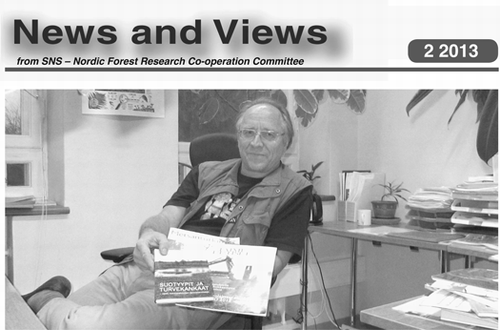
Metla still issues some paper publications, but has moved more and more to electronic media. Erkki Kauhanen with some of the physical output. Photo: Mats Hannerz
Communication pays off
Science needs to be communicated. The more targeted the communication, the higher the impact. And the higher the impact, the better the justification for conducting the research.
News & Views met Dr. Erkki Kauhanen, who is the head of the communication department at the Finnish Forest Research Institute (Metla). In his position, he has the tough job of optimising communication of the results produced by about 370 scientists.
He argues for allocating more resources to communication. An optimal balance between science and communication would be for example 70/30, but today more than 90% of resources are dedicated to the research work.
– It is sub-optimal to cut down resources for communication. Unfortunately, this is what is usually done when budgets are slimmed down. We would gain more from doing the opposite, he says
His arguments are, in short, that research has no impact on society unless the results are communicated and become more widely known. Well-targeted communication pays off by generating more funding. A good example is Worldwatch Institute which is unbelievably influential compared to its small staff.
The long tail of a scientific project
An organisation such as Metla produces a mass of research results, some of which are only disseminated in scientific articles.
–We could, in theory, stop doing research for ten years, and still have enough results to communicate and implement, he says provocatively.
Such a move would of course not be realistic, but still he wants more awareness of the need to communicate a research project from a longer-term perspective. He talks about the long tail following a research result.
– We know that it usually takes a few years before a new finding hits the ground and starts to be known by the practitioners, he says. A research project must be prepared to continue communication also for several years after the scientific part of it is completed.
From paper to electronics
Erkki Kauhanen has led Metla's communication department for six years, and he has seen a rapid shift in the media used for communication over that short time.
– We are definitely moving from printed to electronic publications. Our previous magazine Forest Research (Metsäntutkimus) was closed down. Today, we rely to a large extent on electronic newsletters and social media, he says.
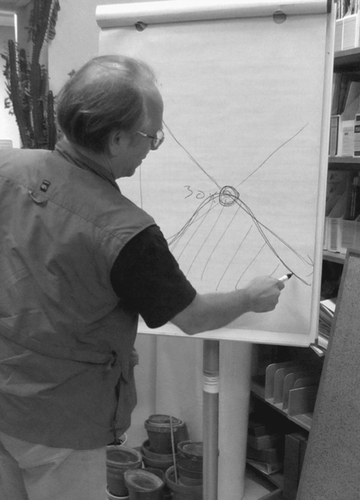
Erkki Kauhanen demonstrates how the output from research can be optimised with a balance of 70% science and 30% communication. Photo: Mats Hannerz
Each newsletter has its own target group and, in all, 15 regular newsletters are issued: two in English, one in Swedish and 13 in Finnish. Information in newsletters and research reports is often taken care of by other organisations, such as Tapio, who process it and adapt it to create guidance for forest owners or other practitioners through their own channels.
Paid for by the people
So, what is the main target group for Metla's research? Erkki Kauhanen would like to rank the people of Finland near the top. They are the ones who pay, directly through taxes or indirectly, for the research. The politicians represent the people, therefore they are a very important target group.
– We involve politicians and other decision makers in many of our research projects. They may participate in steering committees, take part in seminars or receive our newsletters.
Other target groups vary between research projects. Some programmes are directed towards industry, others to the scientific community and some to the practical forestry sector.
Are the researchers aware of the need to communicate? Yes and no, according to Erkki Kauhanen. He considers Metla′s professors to be good communicators. Some scientists may be resistant to meeting the media, but once they have been pushed to be “on the air”, they become dedicated to it. And their communication has a good reach in the media. At least 5-10 newspaper clippings about Metla's research are collected each day.
Research must be implemented
“The problem is not the amount of research, but the long time it takes for the results to reach practitioners. New findings must be implemented. That is what we pay for.”
Liisa Saarenmaa is councillor at the Ministry of Agriculture and Forestry, which is financing the Finnish Forest Research Institute (Metla). The ministry uses Metla's expertise to deliver strategically important information on forest economics, biodiversity, climate and other current topics. And they allocate a lot of money to the institute, which has an annual budget of 40 million Euro (private and public funding together).
She is not convinced that more applicable results would be produced if there was more money. Instead, research needs to find its way out to companies, new products and new methods in the forest sector.
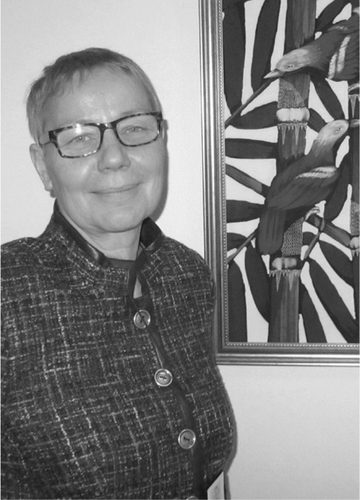
Liisa Saarenmaa sees a missing link between research and the field. Photo: Mats Hannerz
– We are missing a link between research and those who would use the results. We have discussed this missing link for 20 years, but still haven't found a good solution, she says. A more lively interaction between researchers and the society would benefit both parties and produce more societal impact.
An example of such a link is the Forest Development Centre Tapio, which produces practical guidelines for foresters based on Metla's research. However, Liisa Saarenmaa would like to see more developed procedures to implement the scientific results in both the forestry and the forest industry.
Metla's researchers publish their results in international journals of high quality, but it does not necessarily mean a high societal impact. Liisa Saarenmaa sees a contradiction in the rating system of universities and institutes, and the knowledge transfer.
– We should perhaps find other criteria to measure research impact. Communication and implementation are also important, she says.
Seasonal changes mapped by satellite
The recently completed SNSproject Satellite-based mapping of the growing season in northern Fennoscandia and neighbouring parts of NW Russia (SNS-108) tackled the challenge of using remotesensing data to map the start and end of the growing season, and also to monitor the ecological impacts of a changing climate.
by Anne Tolvanen
Phenology is the study of cyclic events in nature. An immediate effect of global warming is a shift in the phenological cycle of land vegetation, for instance the onset and end of the growing season. Prolonged growing seasons could result in increased growth and productivity of forests, or on the other hand, damage and reduced growth due to an increase in extreme weather events, diseases and pests.
Mean onset of the growing season for the 2000–2011 period, based on MODIS satellite data. Field phonological stations used for the study are marked with circles. The mapped onset is interpreted from the onset of leafing of birch observed in the field. Map by Stein- Rune Karlsen, Norut.
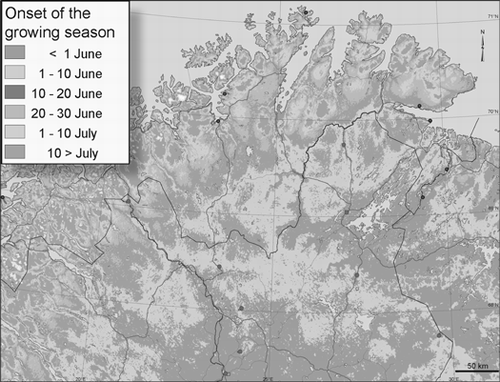
In regions where plants grow near their distribution limits, even minor changes in climate can alter the timing and amount of growth and reproduction. Disruption of seasonal rhythms has ecological implications for species composition and plant–animal interactions, and practical consequences for the management of forests. To evaluate the potential of forest growth and development in the future, we need to understand better the spatial pattern of changes in the growing season.
Earlier onset of growth
Many phenological monitoring studies show that the timing of spring phenophases has advanced due to increased spring temperatures. Earlier onset of growth occurs due to increased temperatures in May and earlier snowmelt. However, there are no clear responses in autumn phenology to temperature changes, since light quality and intensity also have an impact on autumn phenophases.
Phenological observation in the field is tedious and expensive, and full coverage of all regions can never be achieved. Satellite imageaided analysis of the phenology of natural vegetation, however, can provide a spatially complete coverage that can be used to interpolate traditional ground-based phenological observations. Phenological changes during the growing season can be studied by examining changes in the remote sensing-based normalised difference vegetation index (NDVI) value.
The main aim of the SNS-supported project was to develop and apply reliable methods for mapping the onset and end of the growing season for the period 1982–2010, using satellite imagery. The project also aimed to evaluate the best method for calibrating MODIS-NDVI data using the TIMESAT program; to develop methods to model different events and factors, such as the end of growing season and the effect of snow cover and sun angles on NDVI phenology of coniferous sites; and to map the average, trends, and cycles of the onset, end, and length of the growing season based on MODIS-NDVI and GIMMS-NDVI data.
Local variation in phenology
The phenological maps for the onset of the growing season show that the spring advancement is amplified from south to north and there has been a lengthening of the growth period. There is considerable local variation in the phenology, however, depending on the topography, vegetation type, and distribution of lakes.
Ecological impacts of changing climate on the vegetation were also studied in the project. For example, a study by Metla investigated the impacts of nutrient addition and disturbance on the vegetation composition and growth of subarctic plants. Both these factors had an increasing impact on the cover of fastgrowing plants, especially grasses, but the impact of disturbance was much greater. One reason is that microbial activity did not limit plant growth, at least in the studied habitats. Disturbances caused by e.g. humans or herbivores therefore contribute more to changes in the understorey vegetation structure than increased levels of nutrients in subarctic vegetation. Hence the intensity and type of disturbances should be considered in forthcoming predictions of plant responses to climate change.
The outputs from the project are useful for the monitoring and management of northern forests and other similar forested regions. The methods are applicable to related fields such as the development of tools for monitoring forest disturbance.
From a meeting with the SNS-project 108: Natalia Polikarpova (Russia), Stein-Rune Karlsen (Norway), Birger Ulf Hansen (Denmark), Lars Eklundh (Sweden) and project leader Anne Tolvanen (Finland).
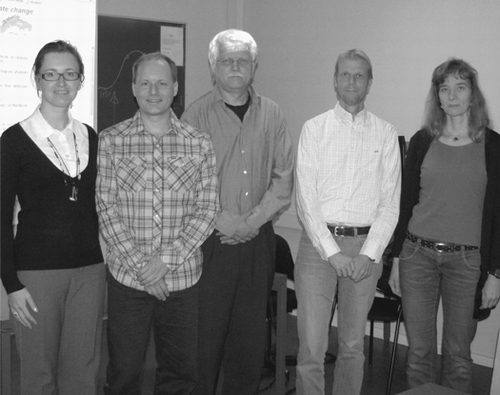
Partners and contact
The project SNS-108 drew together the expertise of four institutes in Fennoscandia and NW Russia. Metla has the best network of phenological observations in Fennoscandia. Lund University has developed software for calibrating MODIS-NDVI satellite data. Norut Tromsø has long experience in linking phenological field observations with different remote sensing instruments. Pasvik State Nature Reserve has a long time series of phenology data for the Kola Peninsula.
Contact: Professor Anne Tolvanen [email protected]
Output and read more
| • | The final report and a list of scientific references can be downloaded from www.nordicforestresearch.org. | ||||
| • | The final report and a list of scientific references can be downloaded from www.nordicforestresearch.org. | ||||
| • | The observation data from Metla was converted into web-based maps and animations, which are updated once a day (http://www.metla.fi/metinfo/fenologia/index-en.htm). | ||||
| • | The phenological service information (http://www.metla.fi/metinfo/fenologia/index-en.htm) is among the most frequently visited web portals of Metla. | ||||
| • | Lund University distributed a freely available TIMESAT software package for analysing time-series originating from satellite sensor data (http://www.nateko.lu.se/TIMESAT/timesat.asp?cat=0). | ||||
| • | Pasvik State Nature Reserve in Russia organised training courses and excursions for schoolchildren on phenological monitoring. | ||||